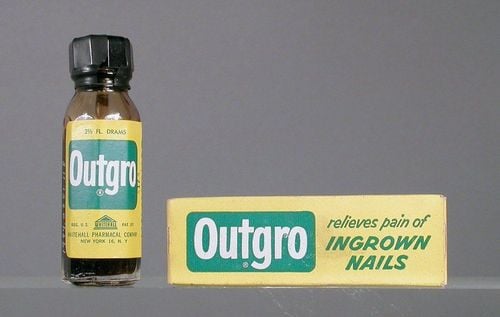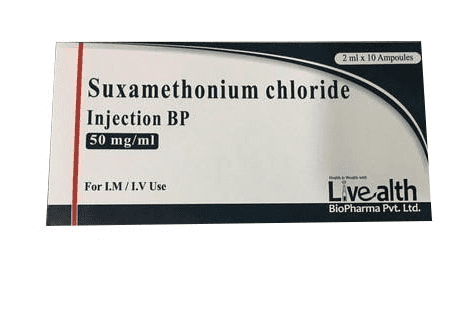This is an automatically translated article.
Fresofol belongs to the group of anesthetics and anesthetics. The drug is used in anesthesia and sedation. Let's find out information about Fresofol drug through the article below.1. What is Fresofol?
Fresofol 1% drug, the main ingredient is propofol 1%, which has anesthetic and sedative effects. The mechanism of action of the drug is the same as that of all other common anesthetics, but is currently not well understood.
Fresofol 1% is a general anesthetic, the mechanism of action of the drug is not known, Fresofol is fast acting, in a short time, used intravenously, used in induction and maintenance of anesthesia for adults and children over 3 years old.
2. Uses of Fresofol 1%
Fresofol is used in the following cases: Anesthesia (initiation and maintenance of anesthesia); sedating drugs used in diagnostics and surgery.
3. Dosage - how to use Fresofol 1%
How to use:
Fresofol is used by intravenous infusion, can be used in undiluted form or diluted with 5% glucose solution, or 0.9% NaCl, in a glass infusion bottle. and should only be used by specialist anesthesiologists and in medical facilities with full critical care equipment.
Dosage :
Initiation of anesthesia:
Adults: 40 mg/10 seconds intermittent intravenous injection until the patient has clinical signs of onset of anesthesia. Children over 8 years old: 2.5 mg dose /kg body weight Children from 3 to 8 years: Need more caution, slow injection and monitor drug response Maintenance of anesthesia: Anesthesia can be maintained by continuous infusion of 1% Fresofol or intermittent injection to maintain the level of anesthesia. required depth of anesthetic.
Adults: continuous infusion at a rate of 4-12 mg/kg/hour or intermittent injection of 25-50 mg/time. Children > 3 years: infusion rate 9-15 mg/kg/hour. Sedation in adults in intensive care: dose from 0.3 to 4 mg/kg/hour, should not be used for more than 3 days.
4. Contraindications of Fresofol 1%
Do not use Fresofol 1% in the following cases:
Patients are sensitive to any ingredient in Fresofol. Patients allergic to soy, peanuts. Patients under 16 years of age in intensive care for the purpose of sedation. Women who are pregnant, or are breast-feeding (with caution).
5. Signs to know when using an overdose of Fresofol 1%
You should tell your doctor if you have symptoms of respiratory and cardiovascular failure such as shortness of breath, chest pain, tachycardia, as these may be signs of an overdose of Fresofol if not treated. Prompt medical attention can result in death.
6. Interactions with Fresofol 1%
Fresofol 1% can be used in combination with other drugs during anesthesia such as pre-anesthesia, inhalation anesthetics, analgesics, muscle relaxants, local anesthetics. Use of the drug after treatment with suxamethonium or neostigmine may cause bradycardia and cardiac arrest. When Fresofol 1% is combined with CNS depressants, the sedative effect may be increased but may cause severe respiratory or cardiovascular failure. Leukoencephalitis has been reported with the use of lipid emulsions such as propofol in patients being treated with cyclosporin.
7. Side effects of the drug Fresofol 1%
Some common side effects when using Fresofol 1%, include:
Local: Pain at injection site Systemic: headache, excitement Cardiovascular: Hypertension or hypotension, bradycardia . Gastrointestinal: Nausea, vomiting. Respiratory: Transient apnea, cough Skin: Flushing or rash.
8. Notes and cautions during the use of Fresofol 1%
Must be absolutely sterile when using medicine. The medicine is for single use only and the excess must be discarded after not being used up. Shake the ampoule well before use, do not use if the emulsion is layered after shaking well, use only if the emulsion in the vial is homogeneous and the tube is undamaged. Do not mix Fresofol 1% with other solutions for infusion except 5% glucose solution, 0.9% NaCl solution. The drug must be used immediately after opening the vial and used up within 6 hours of reconstitution. While taking this drug should continuously monitor for early signs of respiratory and cardiovascular failure (hypotension, apnea). Tell your doctor about history of heart, respiratory, kidney or liver failure. , decrease in circulating volume, body weakness. Fresofol 1% drug is prepared as an oil-in-water emulsion, so it may cause an increase in serum triglycerides if used for a long time. After using the drug should not drive, operate machinery, or work in potentially hazardous situations. Above is some information about the uses of Fresofol 1% medicine, if you need advice or have any questions, please consult a qualified doctor or pharmacist for advice.
Follow Vinmec International General Hospital website to get more health, nutrition and beauty information to protect the health of yourself and your loved ones in your family.
Please dial HOTLINE for more information or register for an appointment HERE. Download MyVinmec app to make appointments faster and to manage your bookings easily.













